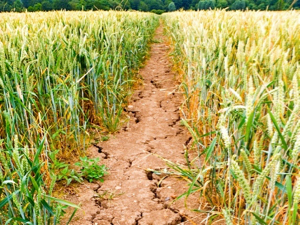From Black Sea to US Midwest, extreme weather threatens crop output

Singapore | Reuters—Forecast dryness in the Black Sea region’s breadbasket is likely to stunt sunflower and corn yields, while heavy rain in the United States after near-record temperatures threaten to take a toll on crops, hitting world supplies and pushing prices higher.
“The weather forecast for the Black Sea region is a big red flag,” said Chris Hyde, a meteorologist at U.S.-based Maxar, with dryness and below-normal rains expected for July and August likely to crimp the region’s key corn and sunflower crops.
Read Also


Alberta Crop Report: Variable weather fails to dispel crop growth
Crop conditions across the province were rated at 72.9 per cent good to excellent, better than the five-year average of 68.8 per cent and the 10-year average of 70.2 per cent. The central region had the best rating at 78.2 per cent, followed by the Peace region at 75.7 per cent and the south region at 73.9 per cent, all above both historical averages. The northeast region was at 70 per cent, below its averages, while the northwest was in line with its average at 61.8 per cent.
Record temperatures in major global growing regions have delayed planting and hurt developing crops as the impact of climate change intensifies, with vast swathes of farmland in Russia, China, India and the United States experiencing extremely hot conditions and below-normal rainfall.
Global wheat prices jumped to a 10-month high in May after adverse weather trimmed yields for the maturing crop in Russia, the biggest exporter.
Hot weather in southern Russia will hit crops because of a lack of soil moisture, with lower precipitation and heat also expected in Urals, Western Siberia and Transbaikalia, Russia’s Hydrometeorological Centre said in a forecast.
Southern and eastern Ukraine have also seen hot and dry weather, with precipitation between May 1 and June 10 only 20-50 per cent of normal, according to the state weather forecaster, with drought hindering development of winter and spring crops in parts of the Kharkiv and Donetsk regions.
“The month of May in Ukraine turned out to be one of the driest for the last 30 years,” state forecasters said. “In northern regions, in particular in Zhytomyr, hail resulted in damage of spring crops such as corn, soybeans and sunflower.”
In the United States, a top food exporter, intense heat has gripped parts of the east coast, while excessive rains in the key Midwest growing region and forecasts for more wet weather have raised fears of floods.
“In the Midwest, the focus is shifting from heat to too much rain, which could result in flooding on corn and soybean producing areas, especially in the Upper Midwest,” Hyde said.
China, India weather seen improving
In Asia, ample rains are expected to alleviate severe dryness in parts of China, a top soybean buyer, while rains during India’s monsoon, running a fifth below normal, are likely to recover, boosting agriculture in the world’s biggest rice exporter and top edible oil importer.
“China’s corn and soybean producing north and east has been dry and a worry,” said Hyde. “But the weather is expected to be normal to slightly above normal precipitation in the July-September period, which will be beneficial for crops.”
China’s meteorological centre told Reuters that parts of the north, northeast and western provinces will see higher precipitation in July to September, which will encourage crop growth.
“But the precipitation will be intense in some areas, there will need to be vigilance about rapid shifts in droughts and floods,” it said, adding that the higher humidity may also raise the risk of crop diseases and pests.
In India, the monsoon is advancing after stalling for more than a week, a weather department official said.
“It has now gained much-needed momentum for its advance into the northern plains. In the next few weeks, we expect several spells of heavy rainfall that will erase the rainfall deficit. July is shaping up to be promising.”
The weather in Australia is expected to be normal, with some areas getting higher than average rains, boosting the wheat crop outlook, while mainly normal weather is also forecast in coming months in Argentina and Brazil.
—Additional reporting for Reuters by Pavel Polityuk in Kyiv, Olga Popova in Moscow, Mei Mei Chu in Beijing and Rajendra Jadhav in Mumbai.
Source: Farmtario.com

